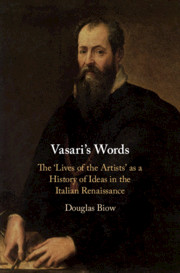Bibliography
Published online by Cambridge University Press: 28 September 2018
- Type
- Chapter
- Information
- Vasari's WordsThe 'Lives of the Artists' as a History of Ideas in the Italian Renaissance, pp. 213 - 234Publisher: Cambridge University PressPrint publication year: 2018



